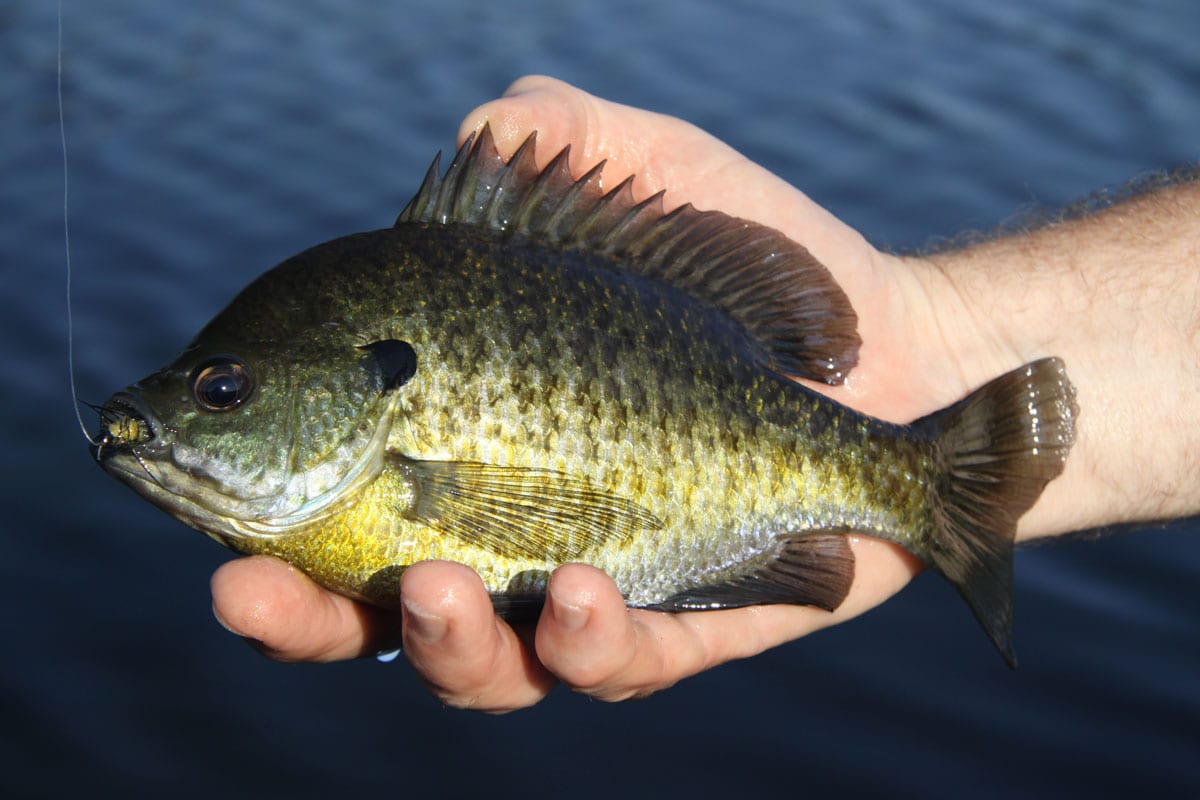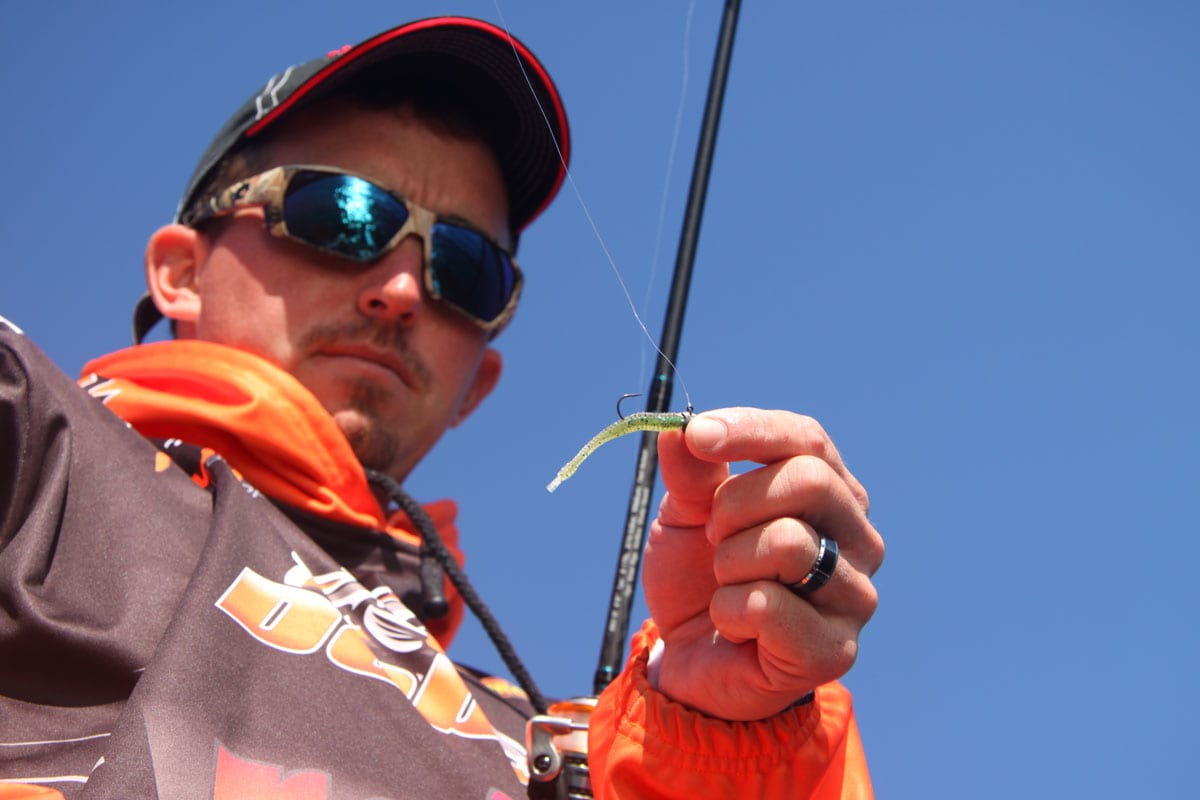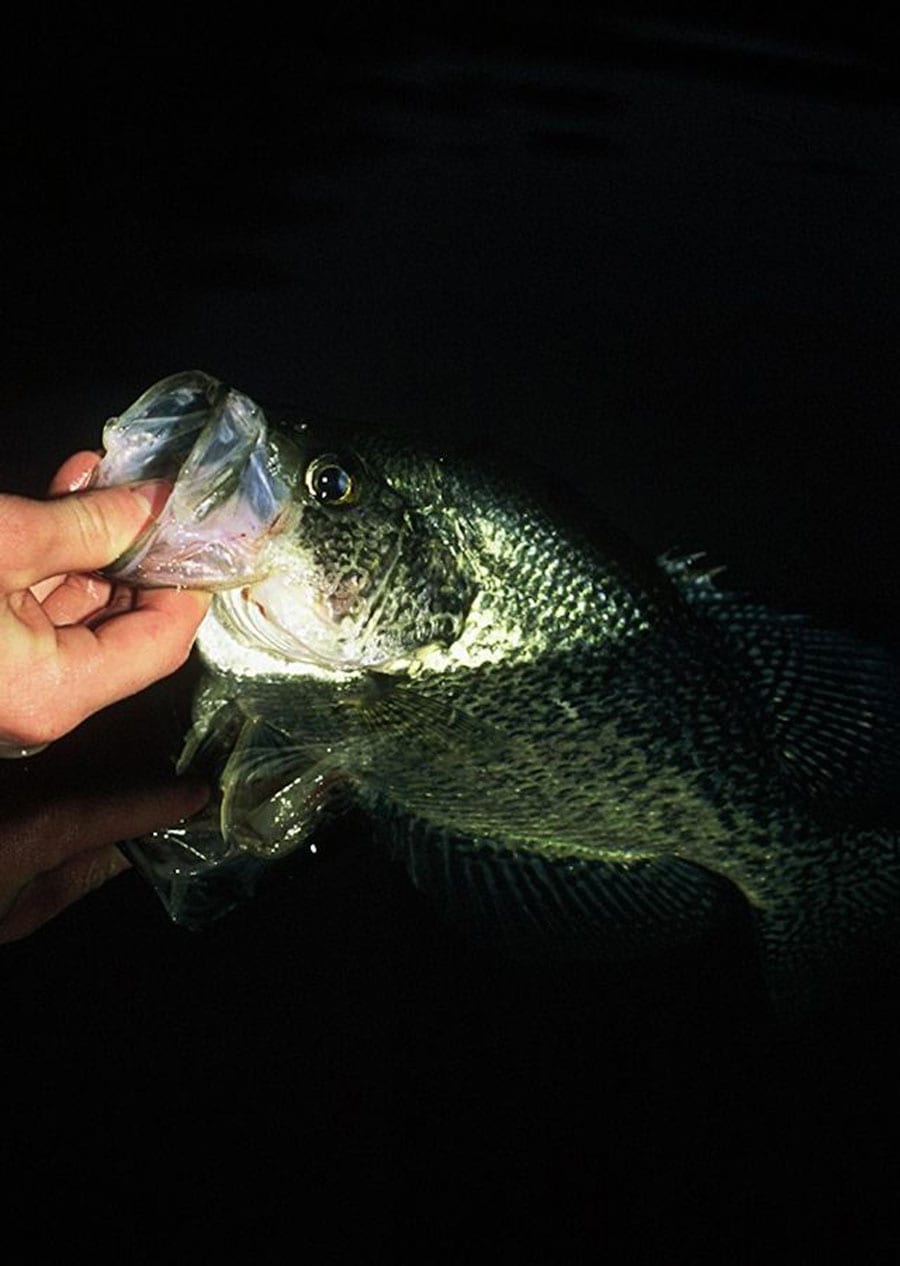
Most veteran freshwater anglers are aware that panfish can be caught on a year-round basis. The less experienced, however, often seem surprised to learn that sunfish, perch and crappies will bite even in the coldest months. Their chagrin makes sense when you look at it from a novice’s viewpoint. After all, in the warmer months you can stroll up to the shore of almost any lake or pond and see dozens of bluegill, pumpkinseed, perch and crappie scurry away from the bank. In the winter, though, there are few fish along the banks. That’s because most species tend to hold in deeper water once the temperature plummets. Find these holdover spots and you can score well.
LOOK DEEP
When the water is cold, panfish, like most other types of fish, gravitate toward the warmest water they can find. In our local lakes, this usually translates into deep water holes. Simply put, try casting to the deepest water you can locate. A six to eight-foot deep hole or ledge adjacent to a shallow flat is the type of place we are talking about here. The deep water area in front of a dam on a mill pond is another great spot, as is any hole gouged in the bottom where a feeder stream enters into a lake. In areas such as these, panfish will school up tight and suspend a foot or two above the bottom.
Now, the catch to all this deep water theory is that many local lakes and ponds lack such honey holes. In such cases, you’ll generally find the fish holding in established underwater weed beds well off the bank. The weed beds, being dark in color, probably hold a little more warmth than surrounding bare flats while also offering a bit of protection to the panfish. Thus, if you can’t find deep water, working submerged weed beds should be you next recourse.
FISH LIGHT
While winter panfish aren’t exactly dormant, they’re not aggressive either. With the water crystal clear and the fish slow to move, you can figure that they’ll get a pretty good look at your bait or lure before they commit. For this reason, light lines and small offerings seem to work best.
To really do a number on winter panfish, step down from you typical freshwater setup to a lightweight 2 or 4-pound test spinning outfit. Such lightweight gear will allow you to cast far off the bank, feel the slightest nibble, and present a tiny offering that will be difficult for the fish to examine, easy to swallow, and just the right size for a sunny or perch to ingest at this time of year. Mike Nicoletti at Causeway Bait and Tackle, in Wantagh, recommends selecting select a longer lightweight rod than you might use later in the season. He feels the leverage provided by a 6- to 7-footer allows for further casts, especially into the wind, than the typical 5- to 5-1/2-foot ultra-light trout setup.

RIGGING UP
Rigging up for winter panfish is really pretty simple. Start by placing a 2- to 2-1/2-inch, torpedo shaped, weighted foam float on your line one to three feet above where your hook will be positioned. Aerodynamic and weighted, this style float will help carry your line far off the bank when you cast. Its position should be set to keep your offering about a foot above the bottom or six inches above the tops of any weed beds you’ll be targeting.
Next, tie a small grub or tube lure jighead to the end of your line using an improved clinch knot. Choose either a 1/48-ounce minnow-shaped head or a 1/32-ounce tube bait head. Now slide on a body and you’re set to go. For the body, choose a small grub or tube measuring no more than 1-1/2 inches in length. Dark colored lures seem to work best this time of year. Squirmin’ Squirts are an excellent choice in pumpkinseed, pumpkin with chartreuse tail, or black with chartreuse tail patterns. Chubby Mini-Mites work well, too. These feature a straight, cone-shaped tail that really vibrates when retrieved. Black with a chartreuse tail has been the hot pattern over the past few years. Berkley Gulp Alive! Waxies Micro Baits are another good choice, although with these I prefer white or pink over the darker colors.
THE GLIDE IS THE KEY
Okay, all set to go! Cast out as far from the bank as possible, allow the jig to settle for a minute or two, then begin a slow and steady retrieve. You want the lure to simply glide past the fish. If the wind is blowing, you might choose to let your float drift over productive water rather than reel it home. A slow drift can be deadly, especially if the wind is blowing your lure right back toward your feet. Simply reel in any slack as your floats moves inshore, left or right. As a rule, the calmer the water, the deeper the fish will hold and the slower you’ll need to retrieve.
Bites are generally subtle. Usually they register as a slight tilt or twist of the float. Sometimes they simply stop the float from moving. Rarely is the float pulled under the water as will happen when the fish feed aggressively later in the spring. If you notice any change in the movement of the float, tighten up on your line and use a light flick of the wrist to set the hook. Pull too hard and you’ll simply yank the lure out of your quarry’s mouth.

LET EM’ GO
As a rule, wintertime panfishing is best early and late in the day during periods of low light. Cloudy weather also seems to improve scores, especially where crappies are concerned. A good bite develops on many waters around 7:00 a.m. and again from 4:00 until dusk. Sometimes, you’ll find the fish will continue to take after dark but be warned the nighttime fishing at this time of year can be a bit more than chilly.
Given fair weather, this early season action with panfish should be well underway by mid-February. Often, the first stretch of three or four consecutive days with temperatures reaching into the upper 40’s or low 50’s sees a real blitz. Head on out to your local tackle shop, pick up a few jigs, tubes and floats, and make plans to be ready. Before you know it, the bite will be underway.









